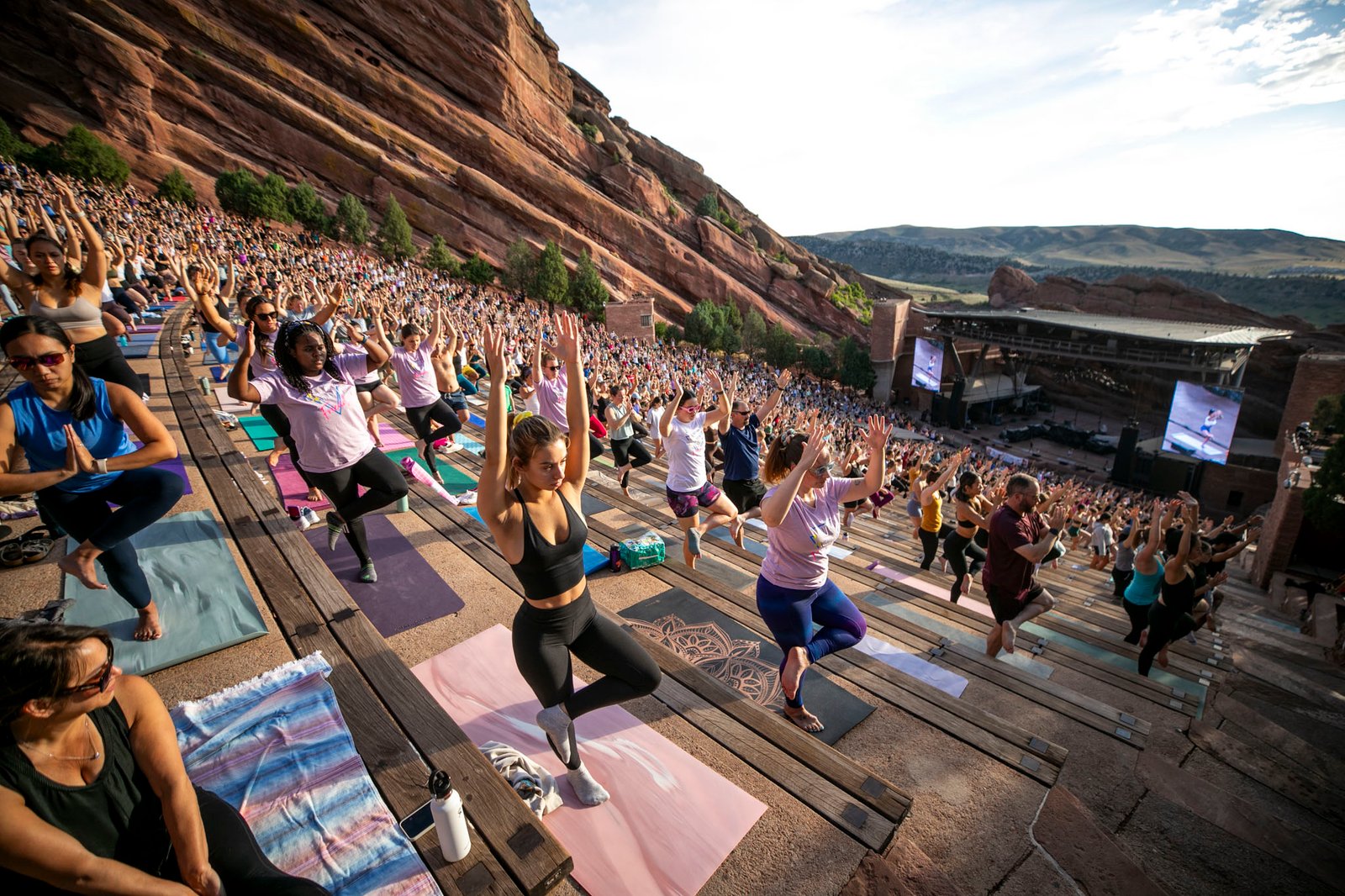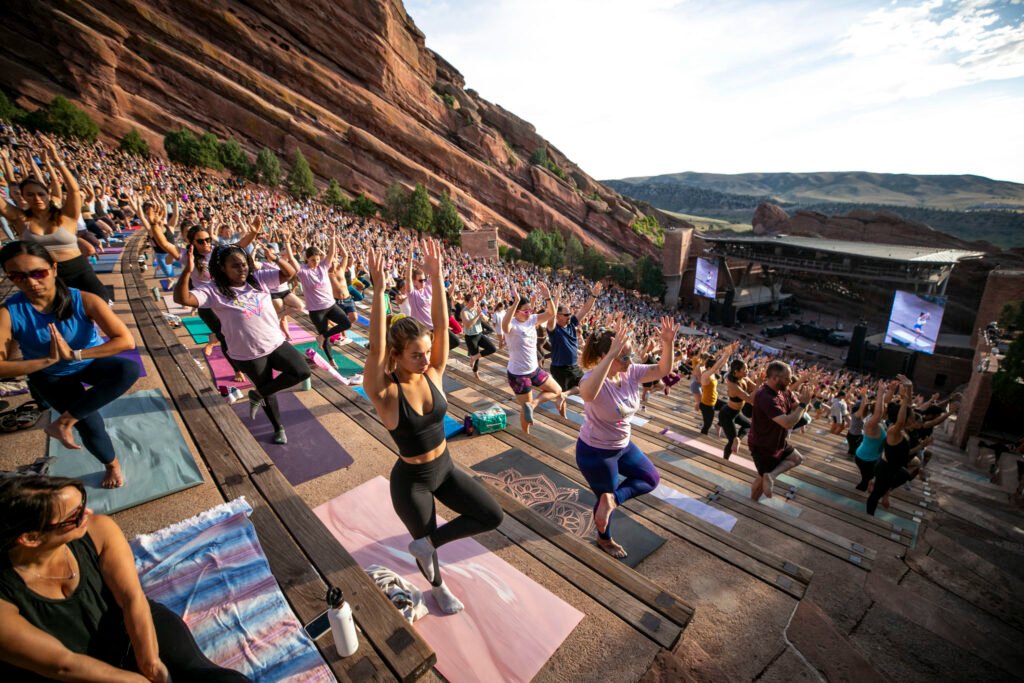
Yoga Classes and the Music Debate: Should We Have Music or Not?
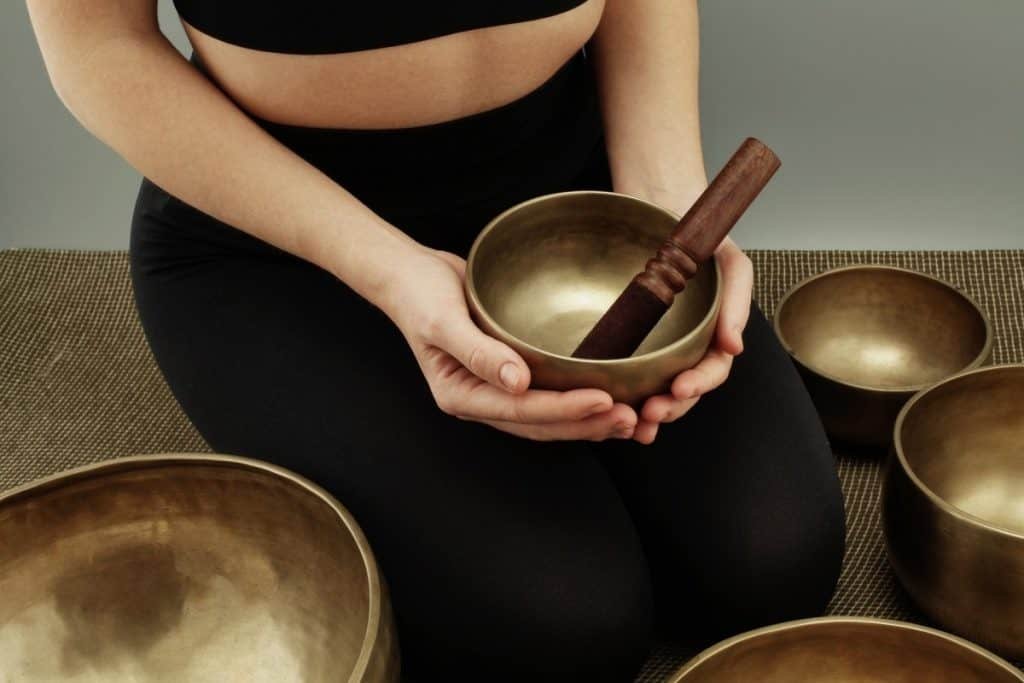
Yoga classes have evolved so much over the years that they now cater to various personalities, preferences, and moods. One of the most debated topics in the yoga world today is whether or not to include music during class. For some, the thought of a banging playlist during yoga flows energizes them, while others find it disruptive and prefer the serene silence of a quiet studio. So, the question remains: Should yoga classes have music, or should they be conducted in complete silence?
Spoiler alert: There is no universally correct answer. Whether you’re a yoga teacher or a practitioner, the answer comes down to finding your personal “why”—your intention behind the practice. Once you understand the purpose of your practice, it becomes easier to decide if music enhances or disrupts that experience. Let’s dive into the pros and cons of music in yoga to help you make an informed decision, whether you’re a teacher or a student.
Should There Be Music or No Music in Yoga Class?

Ultimately, whether you prefer a music-filled class or a silent space, the key is to approach it intentionally. Recognize both the benefits and challenges that come with each approach. Let’s break it down:
Yes to Music in Yoga: It Sets the Tone and Energy

Music can completely transform the atmosphere of a yoga class. A well-curated playlist can set the vibe, creating an emotional connection and a shared rhythm that unites all participants in the room. The right music can fill the space with energy, making the practice feel more fluid and connected.
In dynamic classes like vinyasa flow or power yoga, music can fuel the intensity, pushing students to hold poses longer, build strength, or power through challenging sequences. The beat of a high-energy track can encourage focus, helping participants sync their breath and movement with the rhythm.
In more gentle, restorative styles of yoga, music helps to establish a peaceful environment, gently guiding participants into a relaxed, almost meditative state. It creates a mood that aligns with the theme of the class, whether it’s calming or energizing.
Ultimately, music doesn’t just fill silence—it creates the mood.
No to Music in Yoga: Distractions Disrupt Self-Inquiry
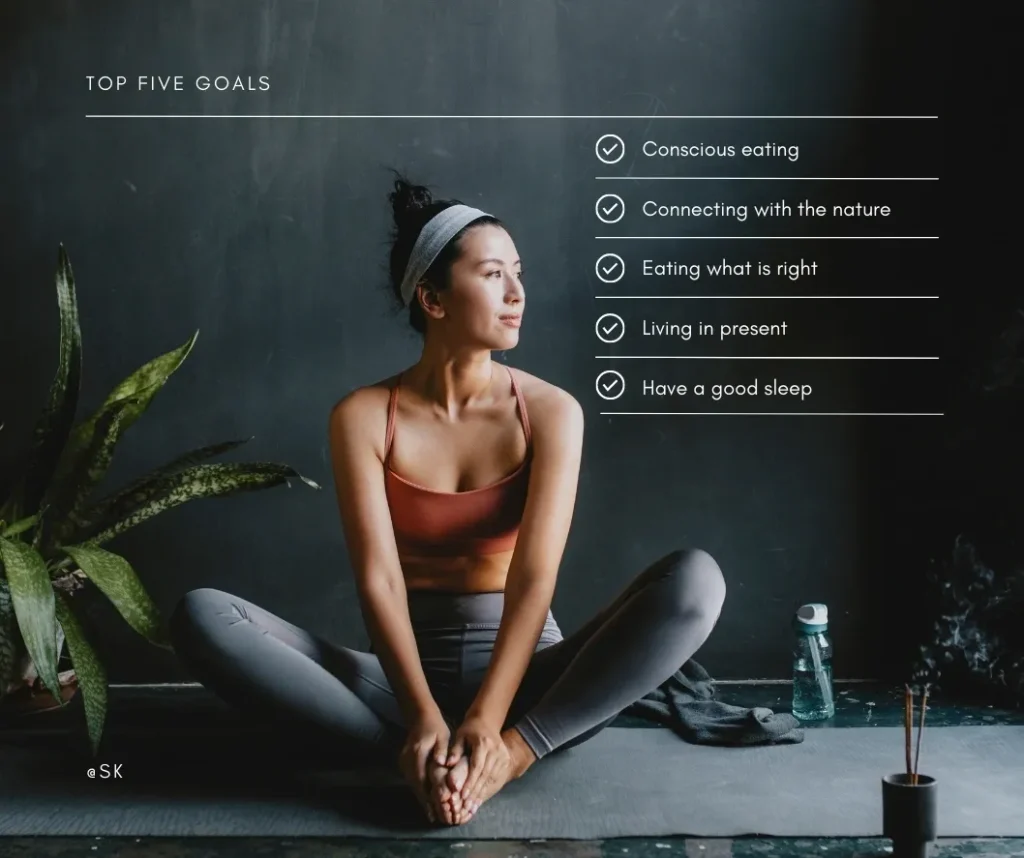
However, while music can set a vibe, it can also be distracting. Yoga is a deeply introspective practice that encourages students to focus on their breath, thoughts, and physical sensations. The goal is to create a space for self-inquiry, where practitioners observe their internal experiences without judgment. For some, music can disrupt this deep connection, pulling the mind away from the present moment.
Think about meditation: Few people would choose to meditate with the TV or music on. The reason is simple—distractions interrupt the stillness and clarity that meditation seeks to cultivate. The same can apply to yoga. A silent studio allows practitioners to tune in more deeply to their internal state, fostering a stronger connection to their breath, movements, and even the thoughts that arise during the practice.
Silence allows for a quieter, more focused experience where students can truly observe their inner world.
Yes to Music in Yoga: Anchors the Mind
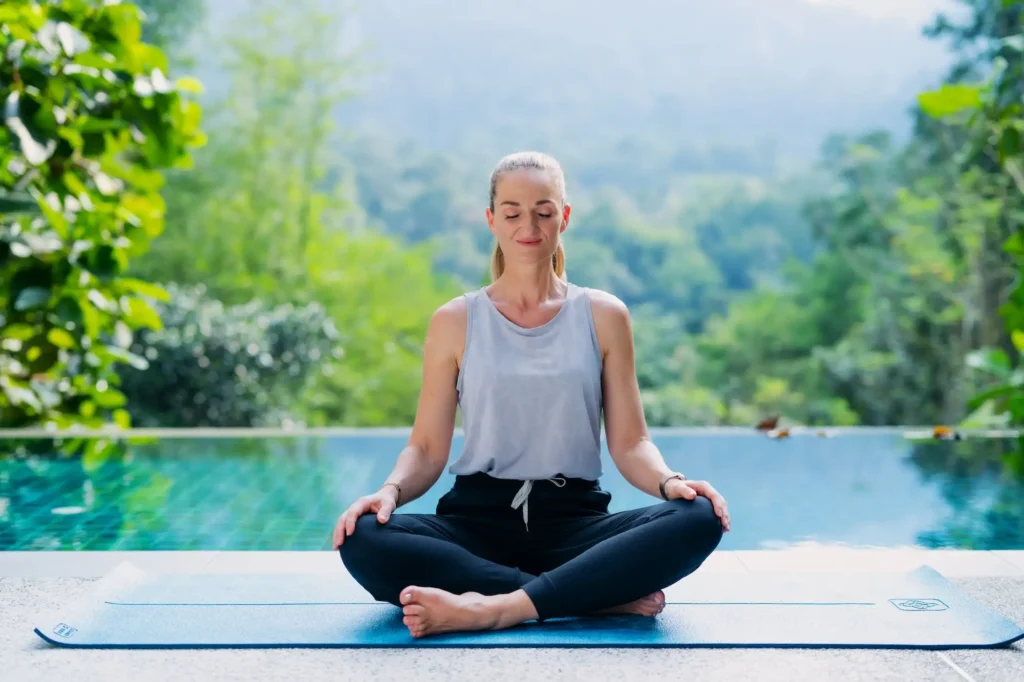
On the flip side, music can serve as a helpful anchor. During moments of stillness, the mind often wanders—especially for beginners. It’s easy to get distracted by racing thoughts or emotional discomfort. For those who struggle with mental distractions, music can help keep the mind anchored to the present moment.
A steady beat or calming melody provides a point of focus, preventing the mind from drifting off into ruminations or anxiety. For beginners, familiar tunes can ease the transition into yoga practice, making it feel less intimidating. The presence of music creates a more comfortable, engaging experience, helping practitioners stay in the flow.
Music becomes like a lifeline that helps you stay connected to the present and resist wandering thoughts.
No to Music in Yoga: Emotional Interference

While music can be a grounding tool, it can also pull us in the opposite direction—into an emotional whirlwind. Music has the power to evoke powerful memories and emotions. A particular song could trigger feelings from the past, like a romantic relationship, a challenging time, or a cherished moment. Imagine flowing through a vinyasa class when suddenly a song reminds you of a difficult breakup or a lost loved one. This emotional interference can disrupt the peace and clarity you’re trying to cultivate.
Yoga asks us to be present with our emotions, but music’s influence might steer us away from that. Without external influences, the practice becomes more about self-awareness—not external triggers. Silence, though stark, offers a clean mental slate where you can face discomfort and growth without the influence of external soundscapes.
Yes to Music in Yoga: Creating a Welcoming Atmosphere
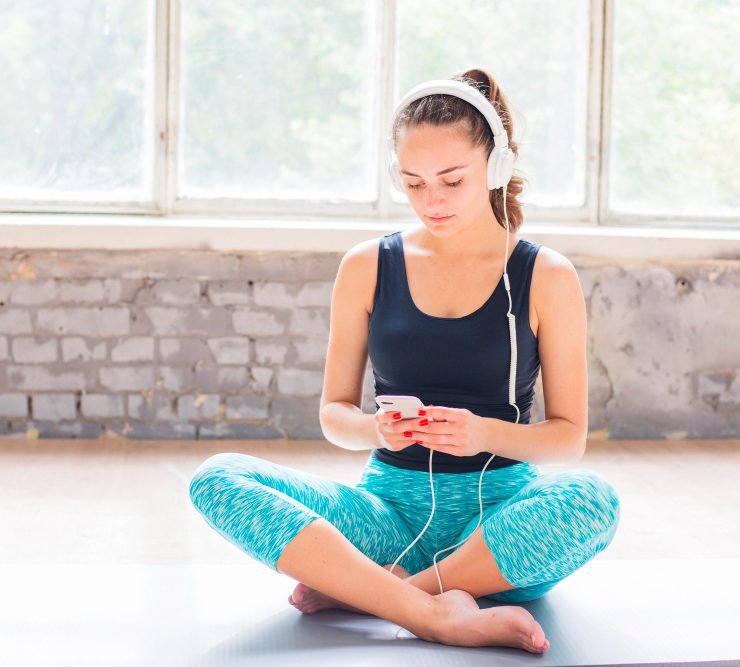
For some, silence in a yoga class can feel intimidating, especially if they’re new to the practice. A quiet room might make students feel awkward or disconnected. Music can soften the space, making it feel more inviting and approachable.
Even subtle background music, like a soft piano or ambient sounds, can create a cozy, welcoming environment. Music acts as a buffer against external distractions, such as street noise or sounds from the outside world. It creates a protected, peaceful cocoon where students can focus fully on their practice.
For newer students or those who feel uncomfortable with silence, music makes the practice feel safer and more approachable.
No to Music in Yoga: A Place for Fun or Learning?
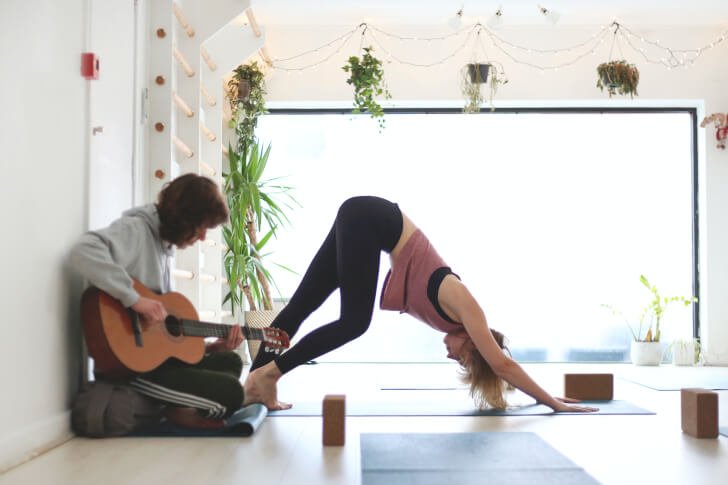
While music can certainly make a class more fun, is that what yoga is about? We have countless opportunities for entertainment, but yoga offers something different: a chance for deep self-reflection, growth, and emotional transformation. Yoga’s roots are grounded in stillness, mindfulness, and connecting with our inner selves.
By removing external distractions like music, students are more likely to face discomfort, challenge themselves, and ultimately grow. In yoga, we use the body as a tool for self-inquiry. If the focus is solely on fun or entertainment, it can detract from the deeper purpose of yoga: personal development, emotional growth, and inner peace.
The Answer? It Depends.
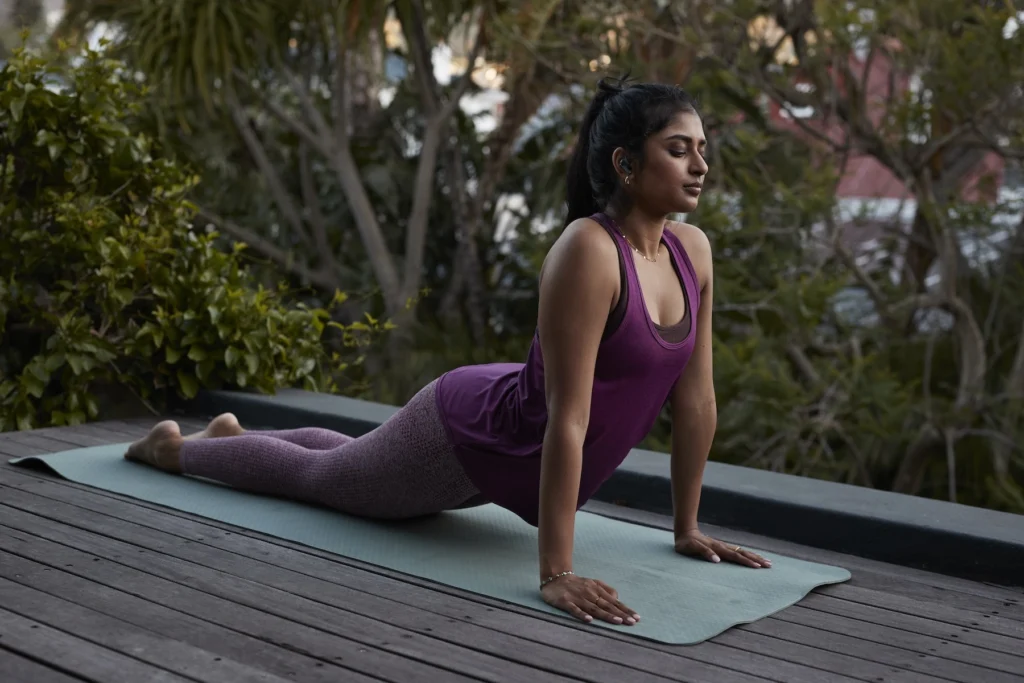
So, what’s the final verdict? There’s no one-size-fits-all answer when it comes to music in yoga. It all comes down to your personal intention. For yoga teachers, the decision should be based on the kind of experience you want to create. Do you want a lively, energetic class with music that boosts the vibe? Or do you prefer a more introspective environment where silence helps foster deep connection?
For practitioners, it’s about what resonates with you. Does music help you stay present and engaged, or do you find that silence allows you to tune in more deeply to your practice? Are you choosing based on your own preferences, or simply because it’s easier? Whatever you choose, it’s okay as long as it aligns with your personal experience.
Final Thoughts
The debate about whether to have music in yoga classes is not about being right or wrong. It’s about purpose and intention. Music can offer energy and focus, while silence can enhance self-inquiry and personal growth. As a teacher, you don’t have to please everyone, and as a practitioner, you should trust your own experience. Whether you prefer music or silence, the most important thing is to connect with your practice in a way that supports your well-being and growth.
After all, yoga is a deeply personal journey, and your practice should reflect what feels best for you—whether that includes the soothing sound of music or the quiet stillness of the mat.
